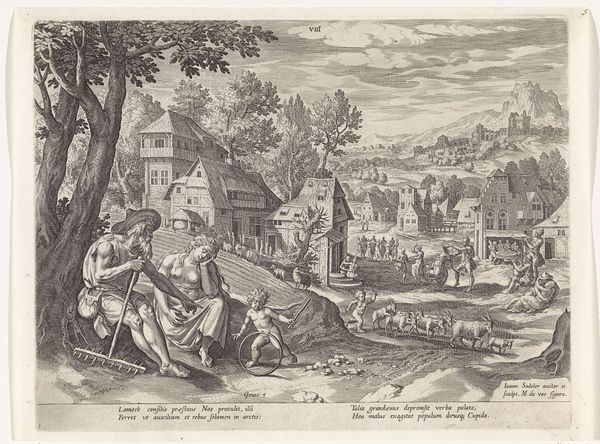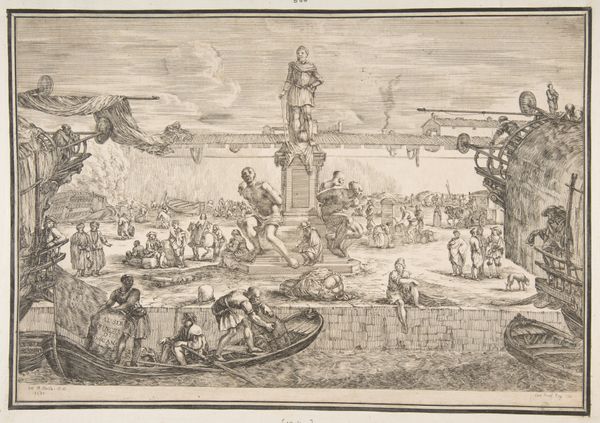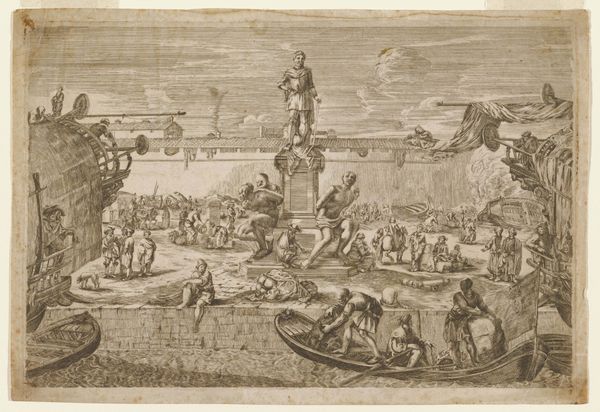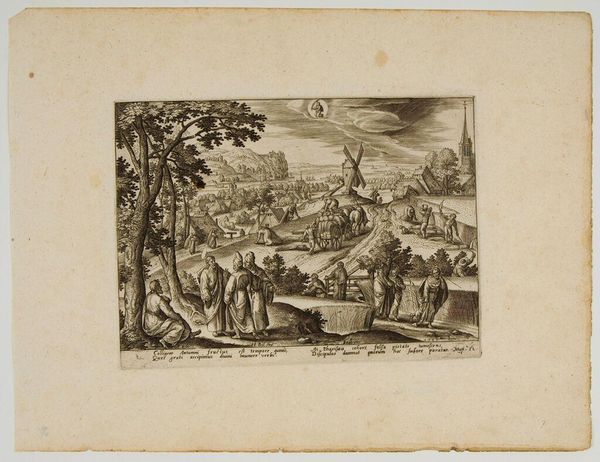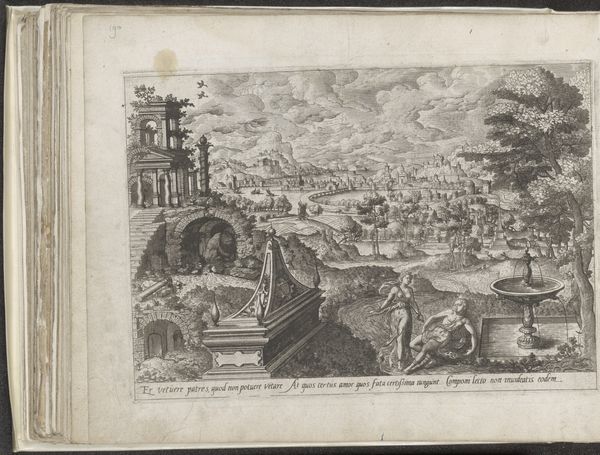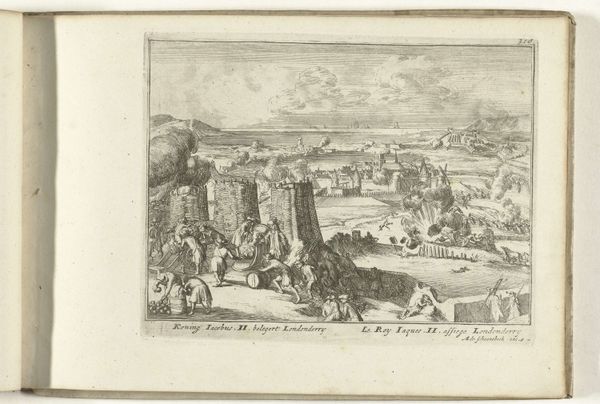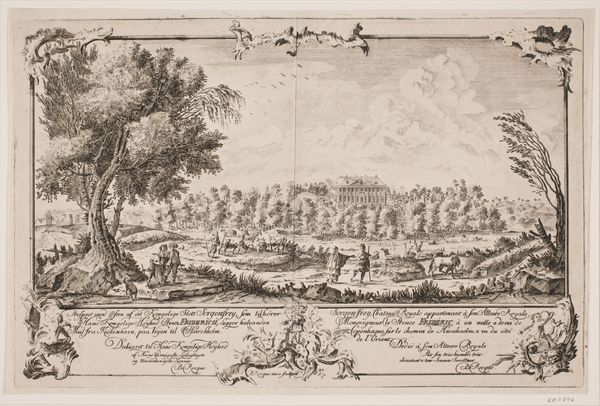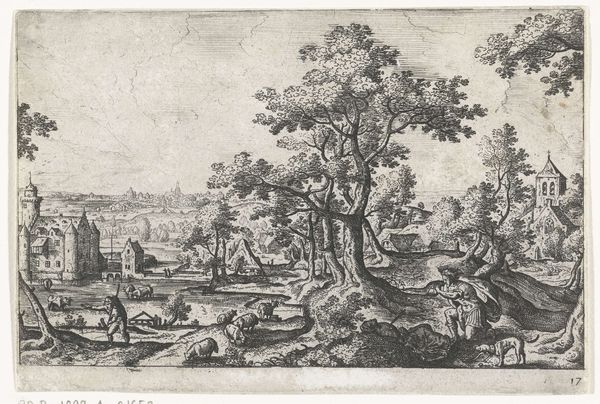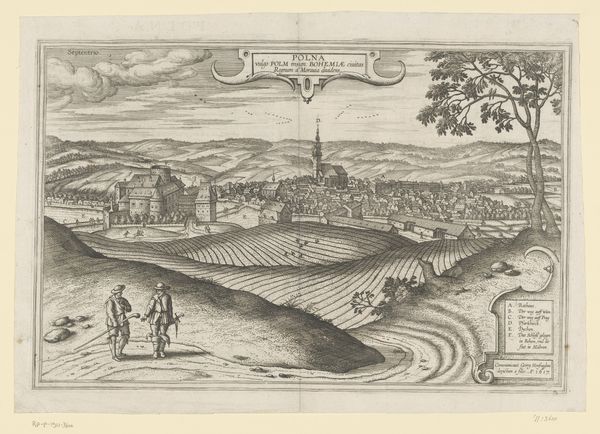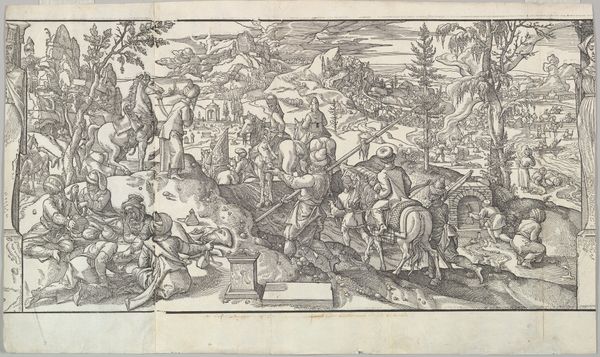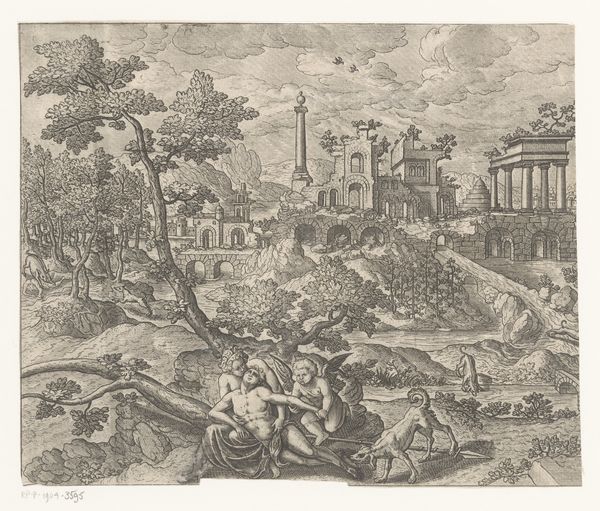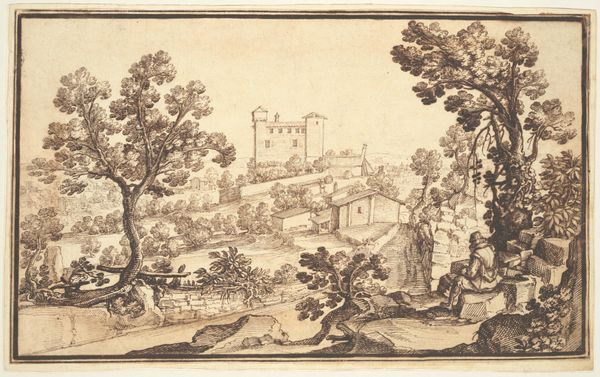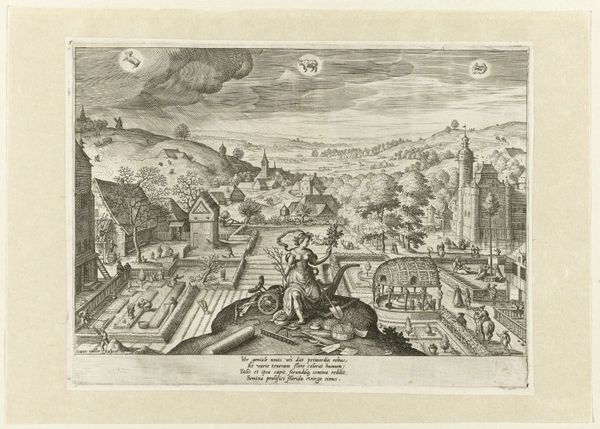
print, etching, paper, ink, engraving
# print
#
etching
#
landscape
#
mannerism
#
paper
#
ink
#
history-painting
#
engraving
Dimensions: height 203 mm, width 287 mm
Copyright: Rijks Museum: Open Domain
Curator: Here we have “Pyramus and Thisbe,” an engraving by Johannes or Lucas van Doetechum, dating sometime between 1572 and 1652. Editor: The tragic scene in the foreground clashes so dramatically with the pastoral, almost idyllic landscape in the background. The sharp contrast definitely pulls you in. Curator: The Doetechums were masters of Mannerist printmaking. Note how the figures are placed asymmetrically, almost overwhelmed by the architectural elements and expansive landscape, a hallmark of the style. Consider the deliberate composition: the eye is led from the ruins on the left, across the bodies of the ill-fated lovers, and toward the detailed city in the distance. Editor: Yes, the formal elements absolutely guide your reading of the print! I also find it interesting how this print reflects broader cultural trends of its time. The tale of Pyramus and Thisbe, popularized by Ovid, was frequently depicted in art and theater. What can the visual emphasis on the doomed lovers tell us about how such subjects resonated during periods of social upheaval or moral crises? Curator: Perhaps the artists used classical narratives to explore contemporary anxieties, a way to address complex emotions under the guise of historical subject matter. Moreover, the medium itself – engraving – allowed for wider dissemination of these narratives. Editor: Right. Printmaking democratized access to these stories, influencing broader societal values and sparking conversations within communities. The detailed architectural follies might evoke contemporary trends in garden design or even allude to specific patrons. The interplay between text and image here might hold keys to that cultural exchange, too. The presence of the Latin quote places it within a highly educated class. Curator: A valid point. Close examination reveals an understanding of classicism blended with the emerging artistic conventions. By looking at the relationships between all components in the landscape, the emotional core of the scene becomes ever-sharper in view. Editor: Exactly, and these emotional elements were directly experienced by its early viewers within particular social and historical contexts. Reflecting on all this has made me see layers I had not seen initially. Curator: It seems like even centuries later the enduring power of form and design brings forth cultural and societal echoes from long ago.
Comments
No comments
Be the first to comment and join the conversation on the ultimate creative platform.
